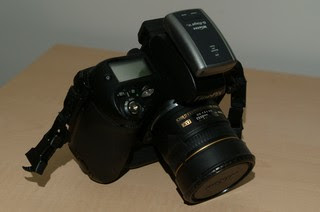
Wintec offers a nice little gadget named "G-Rays 2" (or WBT-201).
It is mainly a GPS-Mouse which can be connected via USB or Bluetooth. This doesn't sound extraordinary if there wouldn't be another feature: It can log data without the need of any external device. You can even "flag" a specific location by pressing a button on the device.
The data can then be processed with "Time Machine X", a software included in the package. You can convert your GPS tracks to many common file formats and even auto-geotag your photos.
Some selected technical data:
- Atmel Antaris 4 Chipset
- can track 131000 points with internal memory
- up to 12hrs. battery lifetime in logging mode
- Uses standard Nokia BL-4C battery type
- standard mini-USB connector (also used for charging)
German readers may click here for more information.








